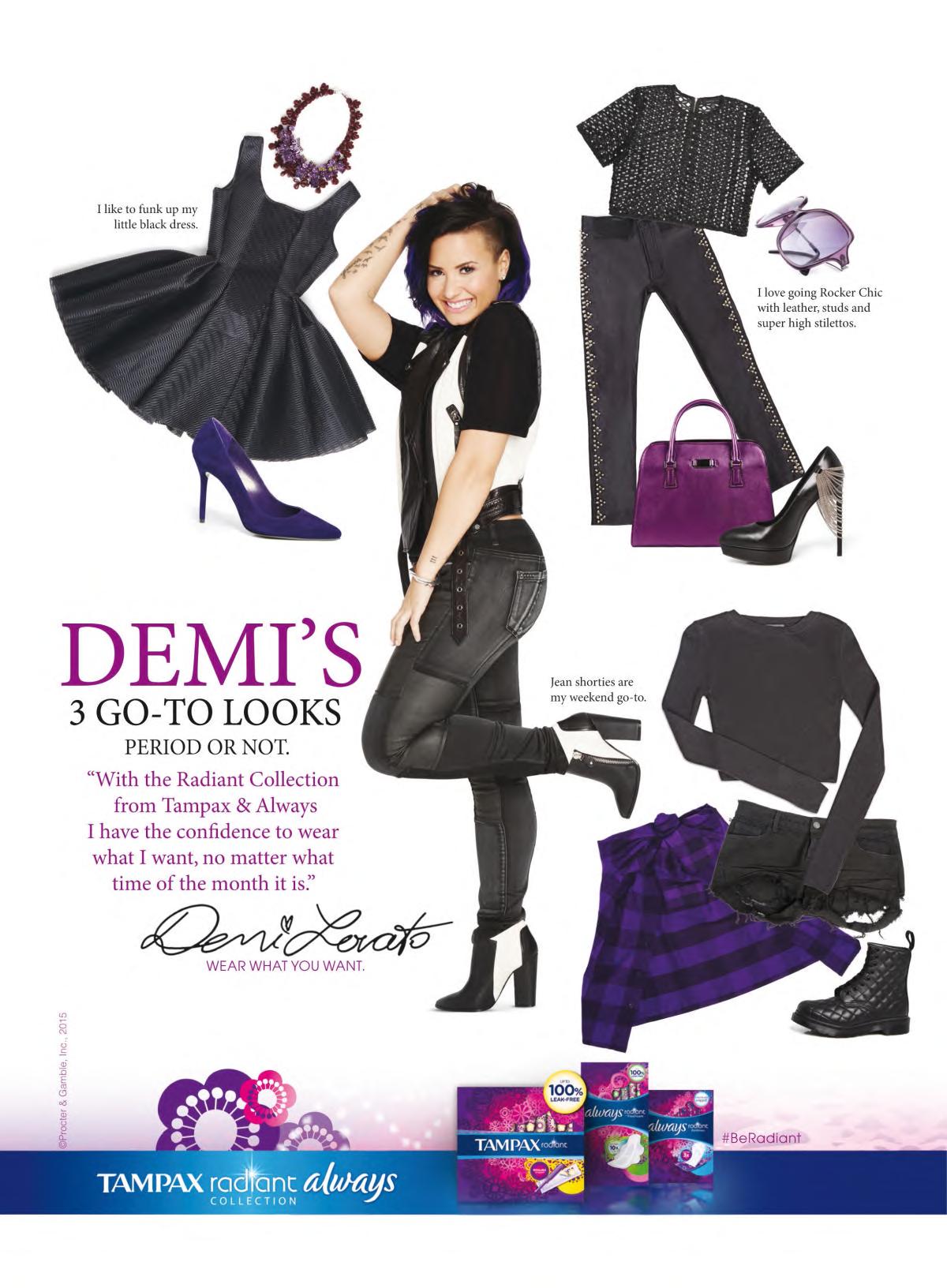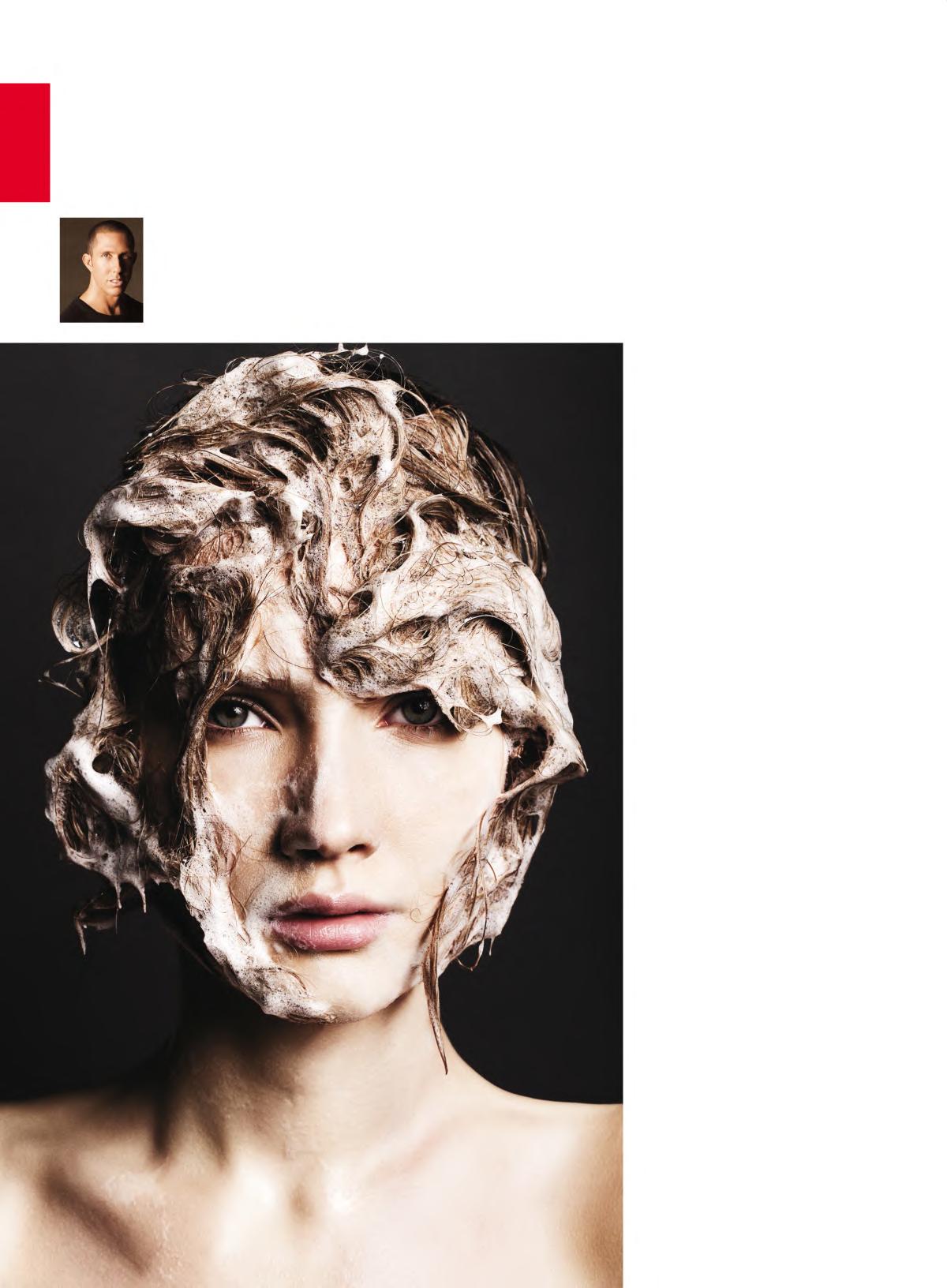
8 minute read
The Hair Pro
she featured a beauty expert who claimed that there was absolutely no difference between the most expensive hair products and store brands. Oprah’s audience was incensed, women getting to their feet to call this “expert” a liar. I sided with the audience, of course; I am my mother’s daughter.
It was that same year that I tore an ad for Vidal Sassoon hair spray out of a magazine. It featured a beautiful young woman with a chin-length graduated bob, and I knew with sheer adolescent clarity that I had to have that haircut. Looking back, I think it was the girl’s sharp cheekbones and full lips that I actually wanted, but in the moment, all that seemed attainable if the hair could just be had.
Advertisement
I showed the picture to my mother. She concurred that I must indeed have the bob, and soon. I was 12, deeply awkward, and not particularly popular. Before homeroom each day, I willed the hands on the clock to move forward because I had no one to talk to. I could see in my mother’s eyes that she, too, thought this bob could save me.
Despite our fierce loyalty to our usual salon, we would no sooner go there for a graduated bob than we would go to a podiatrist for neurosurgery. The bob obviously had to be obtained where it was created—at Vidal Sassoon. Their slogan at the time was “If you don’t look good, we don’t look good.” I was counting on looking good.
My mother and I vibrated with excitement as we entered the salon. Finally, we were going to put our theory to the test—new fabulous haircut, new fabulous life. I had brought along the magazine page. For a week, I had kept it pressed pristine and flat inside my Trapper Keeper. I presented it to my stylist, a tall, lanky Brit with a mop of thick black hair, before being dispatched to the shampoo station.
Once I was back, he set to work. And as he went along, he kept mentioning Winona Ryder. “Oh, Winona is so chic, isn’t she?” he asked. “She’s gorgeous.” We’d move on to another topic, but then he’d circle back. “Did you see her in Edward Scissorhands? Great movie. You know, she dated Johnny Depp in real life.”
And chopped. And chopped. At some point, I fixed my eyes down on the tips of my shoes to keep myself from considering the possibility that maybe the bob was a bad idea. It was so drastic, so different from my usual look. Below my feet, so much hair pooled on the floor. I had a sickening feeling, and then he said, “All set!”
I lifted my head to find not the bob but a supershort pixie cut. Framing my round face and full cheeks, it looked so completely and utterly wrong.
I tried not to cry. I reached for the magazine page and mutely lifted it up, as if pointing out the discrepancy would magically give me the bob I desired. I looked in the mirror.
Reflected back on the opposite side of the page was a fetching picture of Winona Ryder, her hair cropped close to her head.
I sobbed all the way home, positive that this was social ruin. If a fabulous haircut could improve your life, didn’t it hold that its opposite could destroy you? My mother kept saying, “It’s a great cut!” as if she could make it so through the sheer force of repetition. I clung to a thread of hope that my peers would give points for craftsmanship.
When I got to school on Monday, people were so shocked that they almost forgot to make fun of me. We lived in a suburb where every girl had shoulder-length brown hair and wore sweaters from the Limited Too. Even the bob I had wanted was pretty outré by their standards. I think the boy who sat behind me in social studies summed it up best when he asked, simply, “Why?”
The novelist Jeanette Winterson once wrote, “Everyone thinks their own situation most tragic. I am no exception.” While I’m pretty sure she wasn’t referring to bad haircuts, the sentiment applies. Though the Brit had warned that this style required constant upkeep to look its best, I was so obsessed with growing out my hair as fast as possible that I refused to have it trimmed. It came to be just a big, shaggy mess. I avoided the mirror. When I did catch my reflection, my breath caught in my chest every time.
It took me two years to grow it out. All the while, I kept that magazine page in my nightstand. Every so often I would pull it out and stare at it, as if doing so might make it the real me. I hung a picture of Louise Brooks on my bedroom wall. I thought Uma Thurman in Pulp Fiction was the height of glamour. But by the time my hair was once again long enough, I was too afraid to cut it.
All through high school, I wore my hair long. I went off to private school, where no one even knew about the style catastrophe. (All photographic evidence had of course been destroyed.) By the time I graduated, the pixie-induced trauma had receded enough that I decided, like the lead in any good romantic comedy, to mark my upcoming life transition with a change in hairstyle. Right before I left for college, I did it. I finally got the bob I’d wanted since I was 12.
I loved that haircut fiercely, but that didn’t mean it loved me back. Sleekness could be achieved only by blow-drying, then following up with a flatiron. I did this every day for eight years. And like many style choices that seem destined to change your life, the bob neither added nor subtracted much from mine. It was not glamorous; at best, it was cute. I looked nothing like the woman in the Vidal Sassoon ad, and that was fine. Eventually the bob became not about her or anyone else but about me. It was my distinguishing feature for nearly a decade. I didn’t wear much makeup, and my clothes were unremarkable; the cut was my one claim to style.
In 2007, two things happened to end my relationship with the bob: a bad breakup and Rihanna. People I’d just met would comment, “Oh, you got that Rihanna haircut. How daring.” Clearly, it was time for a change.
Today, the idea of flatironing, of fighting the natural order of things under the assumption that the opposite must be best, seems to me an enormous waste of time. I still go to an expensive salon with a tiny bit of my mother’s hope that taking off an inch or two might change my whole appearance, though I know now that it’s all just part of a fantasy. Still, there will always be something undeniably appealing about the promise of a quick fix, even when there’s nothing much that needs fixing. ◆
HE’S REALLY INTO WINONA RYDER, I THOUGHT AS HE CHOPPED. AND CHOPPED. AND CHOPPED.
J. Courtney Sullivan is the author of the novels The Engagements, Maine, and Commencement.

CLEAN HAIR ACT
By Chris McMillan You may have thought you were shampooing your hair just fine all these years, and, well, technically you can’t screw it up too catastrophically. But there are a few things I’m willing to bet you could do differently—and get much better results.
A really good lather is one sign that you’re shampooing properly. hairstylists have been talking about how great one-day-old (or two- or three-day-old) hair is: It’s easier to style; it holds a shape better; it’s less frizzy. That’s true, but there are products that give the same texture as dirty hair, without the grease. Lightweight sprays, like Living Proof Instant Texture Mist, are so easy to use. [McMillan works with the brand.] Generally, if your scalp is oily, you should shampoo every day; if it isn’t, every other day.

You should shampoo your
whole head. Work the shampoo into the roots in different areas around the head, as if it were dry shampoo. Most of us apply regular shampoo to the top of our head, but dry shampoo to only the greasy areas—around the part and hairline. Think of those areas when you’re rubbing in shampoo. Then get in there and give yourself a scalp massage. When we do this in the salon, it’s not just for your enjoyment; it’s because it gets rid of oil and residue on the roots and the scalp. Here’s a mantra: Shampoo the roots; condition the ends.
You should be getting more
lather. Unless you’re using a low-sulfate shampoo, you should be able to work up a good, sudsy lather or else your hair isn’t getting truly clean. If your shampoo doesn’t lather, you can usually tell whether your hair is getting clean by examining the tips of your fingers after scrubbing—if they’re not coated in shampoo, that means shampoo is not getting to your roots.
You should keep rinsing.
You know how your hair looks shinier after you go to the salon? That’s not only because of the blowout. It’s because we are trained to rinse the hell out of your hair after we shampoo it. Shampoo residue sticks to your strands like grime to a window and makes them dull. If you hold a section of the hair while it’s wet, it should squeak a little when you rub your fingers over it— that’s how you know it’s well rinsed. And on the subject of rinsing, you can give up the cold shot at the end of your shower: It’s not making your hair shinier. It’s just making you miserable.









